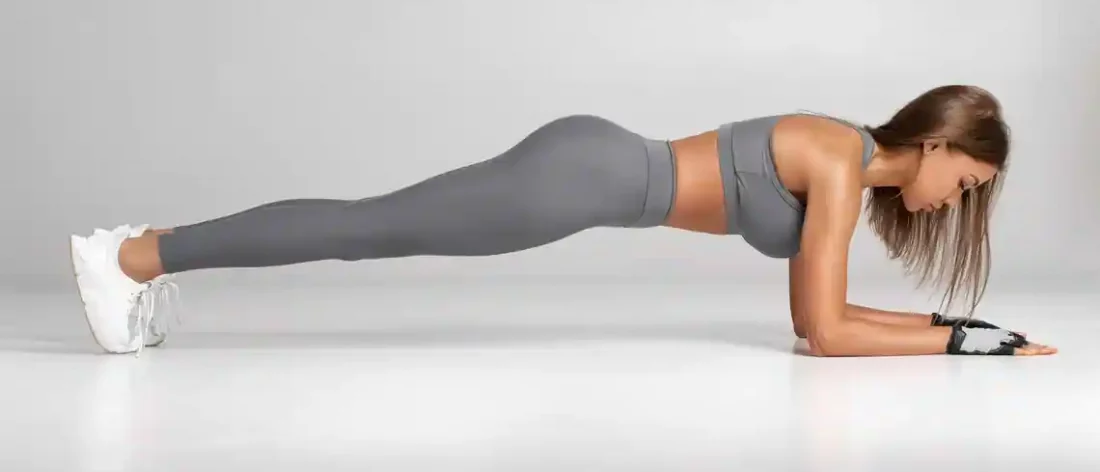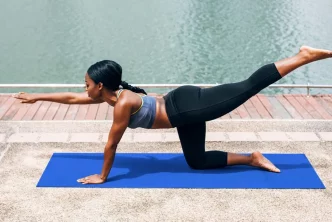Plank Exercise is a safe, challenging, and viable technique for center molding. Variations of planks are utilized across many wellness disciplines, including Boot Camp Regimens, Yoga, Pilates, barre, CrossFit, and many more. The advantages of plank exercise are various. Profoundly and many other muscle bunches in the upper and lower body.
Advantages of Plank Exercises
Fortify the Core and Work Upper and Lower Body Muscles. Profoundly. As assuming that sufficiently wasn’t, planks also work the accompanying muscles:
Chest area:
- Trapezius.
- Rhomboid major and minor.
- Rotator sleeve.
- Anterior, medial and back delts.
- Pectorals.
- Rear arm muscles.
- Biceps.
LOWER BODY:
- Quadriceps.
- Gastrocnemius (calf muscle).
Forestall Muscle Imbalances
It’s easy to foster muscle imbalances when just performing abdominal activities (for example, sit-ups). Many people do not perform spinal and gluteal fortifying activities to compensate for the abdominal work. Planks condition the front and back of the body simultaneously. When muscles are comparably evolved on the two sides of the body, the outcome is a better stance, more spinal help, and less low-back pain.
Work on Functional Movement
One of the most incredible selling focuses for planks is their relevance to functional development, which is essential to carrying on with life. Deeply.
Give a Safe and Effective Alternative to Crunches and Sit-Ups
While sit-ups are an essential functional development for daily life (for example, getting up each day), they are not always the best center for molding decisions for everybody.
Profoundly, so it’s necessary to do back fortifying activities as well. But, again, profoundly and many different muscles in the body.
Crunches and sit-ups can place tension on the spine through the dull flexion and expansion of the spine, and over the long haul, this can turn into an issue. However, if you experience uneasiness with these developments, plank training can be a helpful substitute.
Moreover, crunches and sit-ups are illogical for those with cracked, swelling, slipped plates, or other spinal wounds. Planks are a lot safer alternative in those cases.
And finally, crunches and sit-ups can negatively affect the pose by advancing adjusted shoulders. Again, plan practices move great stance.
Offer Versatile Exercise
The best thing about planks is an innumerable variation of the activity, ranging from traditional and side plank variations to planks utilizing external loads or unstable surfaces. There is a plank for each body and each wellness level. There are many different choices If one doesn’t work for you because of injury, body type, imbalance, or a lack of essential strength. At the same time, exercises can be programmed around the plank.
Plank Variations
This part incorporates the most basic variations of the plank, which fill in as the foundation for developing center fortitude. These planks are performed distinctly with your body weight.
The best thing about the planks featured in this part is that they require no special gear and can be performed anywhere (at the exercise center, at home, or as a travel exercise).
There are many variations of these four planks, ranging from intermediate to advanced, so you will not get exhausted with your center training.
Ready to incorporate these planks and construct the most grounded center of your life as you change the shape of your body? Prepare to feel the ignite with these ten exercises that interface with a progression of planks. The exercises range from amateur to advanced and are around five minutes in duration.
Exercise 1: Beginner
The focal point of this exercise is to develop the amount of time you can stay in a full plank. As the 15-second holds get easier, start to increase the amount of time you are in the plank throughout one moment. For example, start 15-seconds in the full plank hold, with five seconds rest and repeated multiple times, and then, at that point, increase to 25-seconds in the full plank, with 5-seconds rest and repeated once. Keep expanding the plank hold time until you can hold a plank briefly.
Exercise 2: Intermediate
These variations are rep-based and add development to the plank.
VARIATION ONE:
- 10 knee to chest planks, five on each leg.
- 10 curved knees to chest planks.
- 10 mountain climber planks.
Repeat this set multiple times.
VARIATION TWO:
- 10 side planks with foot taps, ten on each leg.
- 5 side plank hip plunges, five on each side.
- 10 side forearm stability ball planks, ten on each side.
Repeat this set multiple times.
VARIATION THREE:
- 10 forearm plank knee taps.
- 10 forearm plank hip drops, five on each side.
- 10 plank walks, high plank to forearm plank.
Repeat this set multiple times.
Exercise 3: Advanced
This advanced bodyweight exercise features development and single-arm/leg balancing.
- 8 full beating planks, eight on each leg.
- 8 side planks with knee crunches, eight on each leg.
- 8 table crunch turns, eight on each leg.
- 8 push-up side planks, four on each side.
- 30-second shaking forearm plank.
- 8 dolphin plank push-ups.
Repeat this set multiple times.
Exercise 4: Stability Ball
Deeply.
- 30-second stability ball forearm plank.
- 15-second stability ball balancing plank.
- 10 stability ball knee tucks.
- 15-second stability ball side forearm plank, 15-second on each side.
- 30-second stability ball save plank.
Repeat this set multiple times.
Exercise 5: Bosu Trainer
You’ll work with the two sides of the BOSU trainer in this rep-themed exercise that will have you moving and bending.
- 10 BOSU plank walks.
- 15-second BOSU side forearm plank.
- 15-second on each side.
- 10 knees to chests from flipped BOSU full plank, five on each leg.
- Ten bent knees to the chest from flipped BOSU full plank, five on each leg.
Repeat this set multiple times.
Exercise 6: Medicine Ball
This medication ball exercise features a combination of static and moving planks.
- 8 pushing leg lift medication ball planks, eight on each leg.
- 30-second medication ball plank hold.
- 8 medication ball cheetah crunches, four on each leg.
- 8 moving medication ball planks, four on each side.
Repeat this set multiple times.
Exercise 7: Weights
Play out this arrangement of short planks with loads intensely while also toning the whole body.
- 12 free weight plank lines, twelve on each arm.
- 12 hand weight rear arm muscle kickbacks, twelve on each component.
- 12 stability ball overhead augmentations.
- 12 stability ball chest progress.
- 15-seconds weighted side plank, 15-seconds on each side.
Repeat this set multiple times.
Plank Exercise Benefits For a Powerful Abs Workout
There are various abdominal activities you can perform to foster the tone and size of your abs; everybody has heard of sit-ups and crunches, which are excellent in their freedoms. However, the plank abdominal exercise is rated as one of the top 10 Abs practices you can perform. So, discard your fancy abs practice gadgets and doohickey’s and continue to read as his article will examine the plank practice advantages and how to do it.
One of the main advantages of the plank is that it tends to be performed anywhere, either at home, the rec center, or even the workplace. All you want is a story mat, and you are all set. In addition, this activity works the Abs, back, and center stabilizer muscles.
Advantages Of the Plank Abs Exercise
This activity can be performed at home or the gymnasium, all you want is a story mat, and you’re all set. The Plank works the abdominal muscles, back, legs and arms. Although this activity looks easy to perform, you will before long see that it is a lot harder than it seems.
How To Perform the Plank?
- Place the mat on the floor and falsehood face down on your forearms.
- Presently lift yourself utilizing your forearms/elbows as if playing out a standard push-up.
- Keep your back, hips, and legs straight and tense your abdominal muscles.
- Stand firm on this foothold until your hips start to sag.
- Rest and repeat the activity.
If you are a novice, you can stand firm on this foothold for 10 seconds and then, at that point, rest and repeat. Before long, you can get strong on the foothold for significantly longer by utilizing this activity regularly. You can also perform variations in the plank workout. The variations in the plank practices are the stability ball plank which works the muscles harder, and the side plank, which operates the obliques.
The plank exercise ought to be utilized as a part of an overall abs practice program, as this activity used on its own won’t give you the six-pack you want. But, utilizing different abs works out, cardio exercises, weight training, and a decent nutritious eating routine. You will before long be reaping the rewards.
In conclusion, the plank exercise can be performed virtually anywhere, works the abdominal muscles, and assists with increasing your center strength. So don’t just do hundreds of sit-ups a week; mix up your exercises and put yourself to the test.





